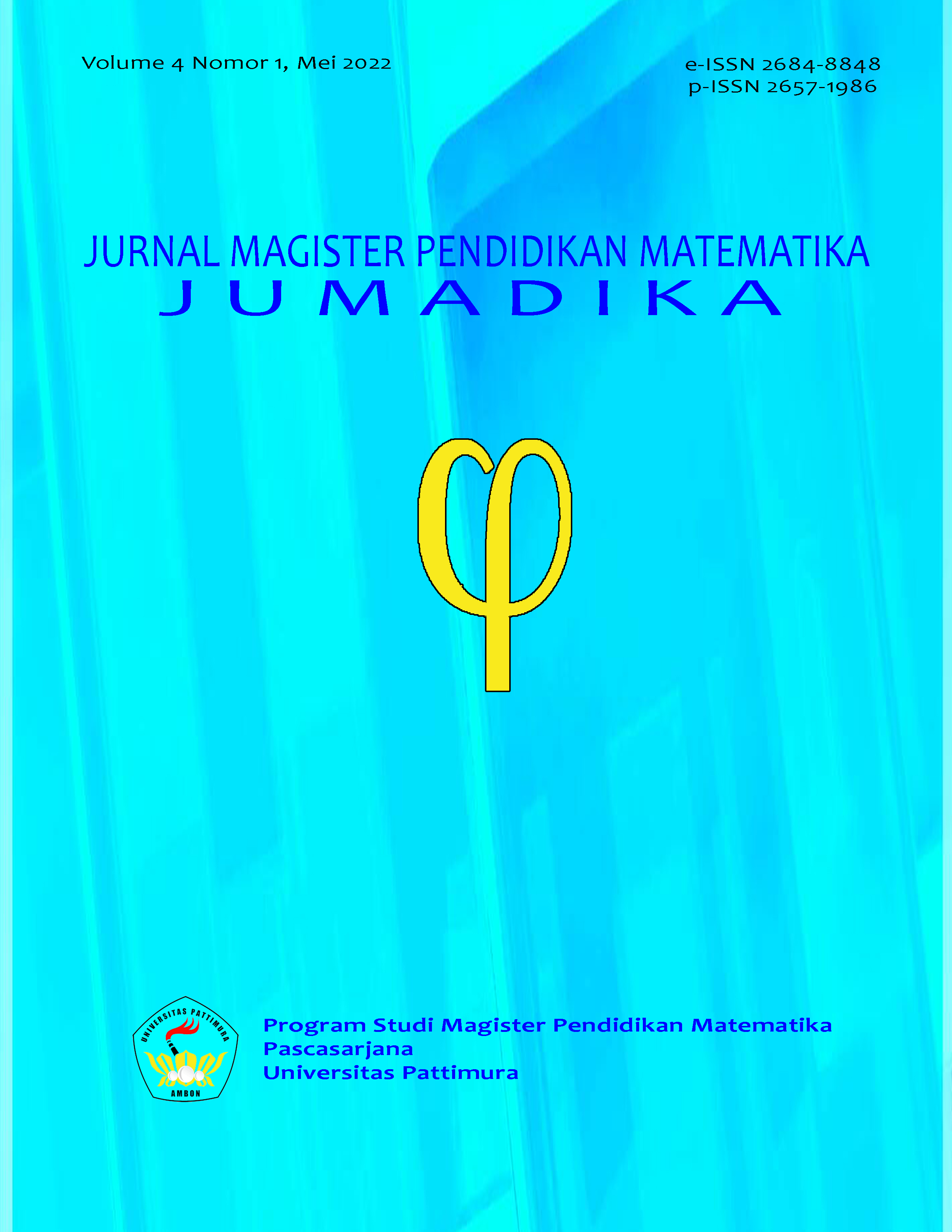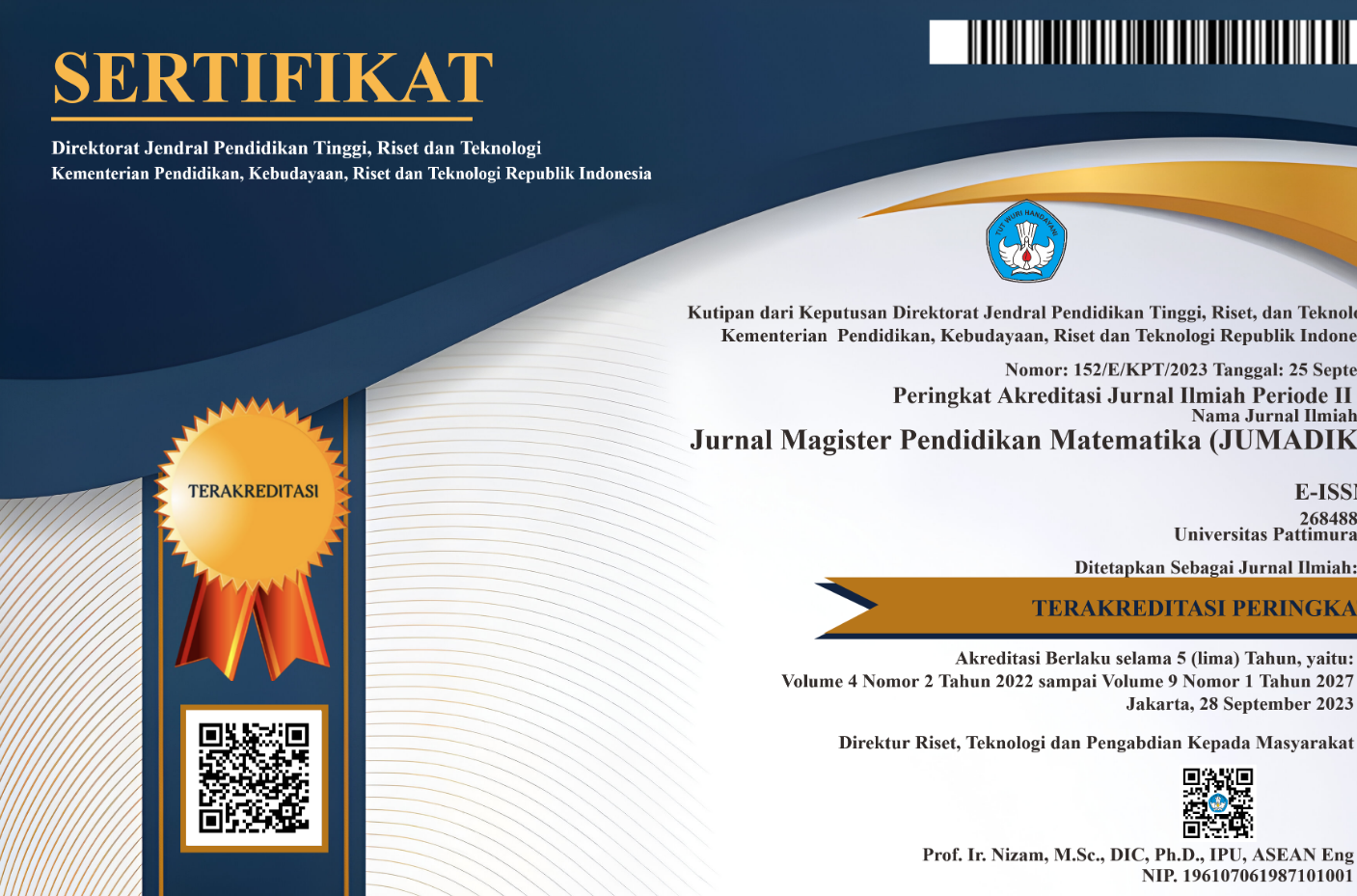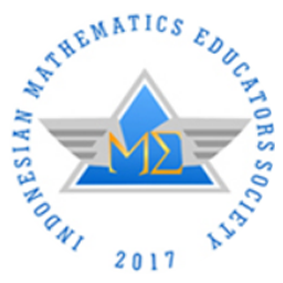DESKRIPSI PENALARAN SPASIAL MAHASISWA CALON GURU BERGAYA BELAJAR VISUAL
Abstract
Spatial thinking is a skill to remember, operate, manipulate, predict, combine, interpret, transform, explore an object to solve problems in various life contexts. Spatial thinking requires three related components, namely: the concept of space, spatial representation methods, and spatial reasoning. The difficulty of students for representing ideas encourages researchers to observe the spatial reasoning of elementary teacher training program’s student. Visual learning style is closely related to exact mathematical soul. Therefore, this study focuses on describing elementary teacher training program’ student’s visual learning style. The subjects of this research are students of class 2019 A and 2019 B as many as 70 elementary teacher training program’s student who are taking elementary school mathematics learning courses at a University in Surabaya and have been grouped into high, medium groups. and below. Medium group elementary teacher training program’s student were selected to be given a learning style test, which then described their spatial reasoning. The purpose of this study was to describe the reasoning of elementary teacher training program student’s visual learning style. This research is a descriptive qualitative research. Researchers used written test, geometry problem-solving questions, and interviews to explore in-depth information on students who are elementary teacher training program’s student of visual learning style. There are 40 students in the medium group with details of 10 students with visual learning style, 30 students with auditory learning style and 10 students with kinesthetic learning style. The group of students who are elementary teacher training program student’s visual learning style are analyzed for their spatial reasoning based on the results of written tests and interviews. The results showed that the visual learning style student’s group tended to work sequentially and neatly meeting the criteria for spatial reasoning indicators. Visual learning style of elementary teacher training program’s student (KSV) could describe their spatial reasoning through the process of categorizing, generalizing, synthesizing, evaluating, define, combine, and represent in solving geometric problems. One of the main characteristics of visual learning styles appears when they manipulate objects and illustrate with sketches. They carry out the work process in detail and detail, and represent through pictures or visuals
Downloads
References
Bird, J. (2004). Matematika Dasar Teori dan Aplikasi Praktis (III). Penerbit Erlangga.
Febrini, D. (2017). Psikologi Pembelajaran,. Pustaka Belajar.
Fiantika, F. R., Maknun, C. L., Budayasa, I. K., & Lukito, A. (2018a). Analysis of students’ spatial thinking in geometry: 3D object into 2D representation. Journal of Physics: Conference Series, 1013(1), 012140. https://doi.org/10.1088/1742-6596/1013/1/012140
Fiantika, F. R., Maknun, C. L., Budayasa, I. K., & Lukito, A. (2018b). Analysis of students’ spatial thinking in geometry: 3D object into 2D representation. Journal of Physics: Conference Series, 1013, 012140. https://doi.org/10.1088/1742-6596/1013/1/012140
Fiantika, F. R., & Setyawati, S. P. (2019). Representation, representational transformation and spatial reasoning hierarchical in spatial thinking. Journal of Physics: Conference Series, 1321(2). https://doi.org/10.1088/1742-6596/1321/2/022056
Ghufron, M. N. (2012). Gaya Belajar. Pustaka Belajar.
Hidayat, K. N., & Fiantika, F. R. (2017a). Analisis Proses Berfikir Spasial Siswa Pada Materi Geometri Ditinjau Dari Gaya Belajar Kresna. Prosiding SI MaNIs (Seminar Nasional Integrasi Matematika Dan Nilai Islami), 1(1), 385.
Hidayat, K. N., & Fiantika, F. R. (2017b). Analisis Proses Berfikir Spasial Siswa Pada Materi Geometri Ditinjau Dari Gaya Belajar. Analisis Proses Berpikir Spasial Siswa Pada Materi Geometri Ditinjau Dari Gaya Belajar, 385. http://conferences.uin-malang.ac.id/index.php/SIMANIS/article/view/134
Karaman, T., & Toğrol, A. Y. (2009). Relationship between gender, spatial visualization, spatial orientation, flexibility of closure abilities and performance related to plane geometry subject among sixth grade students. Boğaziçi University Journal of Education, 26(1), 1–25.
Ldpride.net. (2008). Understanding your learning styles. NDT Resource Center, 1–18. http://www.ldpride.net/Understanding-Learning-Styles.pdf
Linn, M. C., & Petersen, A. C. (1985). Emergence and characterization of sex differences in spatial ability: a meta-analysis. Child Development, 56(6), 1479–1498. https://doi.org/10.1111/j.1467-8624.1985.tb00213.x
McLaughlin, J. A., & Bailey, J. M. (2022). Students need more practice with spatial thinking in geoscience education: a systematic review of the literature. Studies in Science Education, 00(00), 1–58. https://doi.org/10.1080/03057267.2022.2029305
Merwe, F. van der. (2009). Concepts of space in spatial thinking.
Metoyer, S., & Bednarz, R. (2017). Spatial Thinking Assists Geographic Thinking: Evidence from a Study Exploring the Effects of Geospatial Technology. Journal of Geography, 116(1), 20–33. https://doi.org/10.1080/00221341.2016.1175495
NRC. (2010). Learning To Think Spatially. The National Academies Press (U.S.). www.nap.edu
Pavlovičová, G., Bočková, V., & Laššová, K. (2022). Spatial Ability and Geometric Thinking of the Students of Teacher Training for Primary Education. TEM Journal, 11(1), 388–395. https://doi.org/10.18421/TEM111-49
Purwanto, Utaya, S., Handoyo, B., & Bachri, S. (2020). Transformation of geospatial technology knowledge in pre-service and experienced geography teachers as pedagogical tools in the technological-pedagogical-content knowledge framework. International Journal of Learning, Teaching and Educational Research, 19(9), 58–76. https://doi.org/10.26803/ijlter.19.9.4
Pusat Penilaian Pendidikan. (2019). Capaian Nasional. Https://Hasilun.Puspendik.Kemdikbud.Go.Id/#2019!Smp!Capaian_nasional!99&99&999!T&T&T&T&1&!1!&.
Richardson, M., Isaacs, T., Barnes, I., Swensson, C., Wilkinson, D., & Golding -Ucl, J. (2020). Trends in International Mathematics and Science Study (TIMSS) 2019: National report for England. Department for Education, December. https://assets.publishing.service.gov.uk/government/uploads/system/uploads/attachment_data/file/941351/TIMSS_2019_National_Report.pdf
Sari, D. P., & Fiantika, F. R. (2019). A Students Algebraic Thinking Processed in Mathematic Problem Solving at Low Mathematic Ability Student Based on Quantitative Reasoning Ability. Edumatika : Jurnal Riset Pendidikan Matematika, 1(2), 29. https://doi.org/10.32939/ejrpm.v1i2.224
Sharma, J. (1996). Integrated Spatial Reasoning in Geographic Information Systems : Combining Topology and Direction Acknowledgments. University of Maine.
Solari, O. M., Demirci, A., & van der Schee, J. (2015). Geospatial technologies and geography education in a changing world: Geospatial practices and lessons learned. Geospatial Technologies and Geography Education in a Changing World: Geospatial Practices and Lessons Learned, 1–221. https://doi.org/10.1007/978-4-431-55519-3
Yuda, M. (2011). Effectiveness of digital educational materials for developing spatial thinking of elementary school students. Procedia - Social and Behavioral Sciences, 21, 116–119. https://doi.org/10.1016/j.sbspro.2011.07.045
Copyright (c) 2022 Feny Rita Fiantika, Dian Kusmaharti, Susi Hermin Rusminati

This work is licensed under a Creative Commons Attribution-NonCommercial-ShareAlike 4.0 International License.
License and Copyright Agreement
In submitting the manuscript to the journal, the authors certify that:
- They are authorized by their co-authors to enter into these arrangements.
- The work described has not been formally published before, except in the form of an abstract or as part of a published lecture, review, thesis, or overlay journal. Please also carefully read Jurnal Magister Pendidikan Matematika (JUMADIKA) Posting Your Article Policy.
- That it is not under consideration for publication elsewhere,
- That its publication has been approved by all the author(s) and by the responsible authorities – tacitly or explicitly – of the institutes where the work has been carried out.
- They secure the right to reproduce any material that has already been published or copyrighted elsewhere.
- They agree to the following license and copyright agreement.
Copyright
Authors who publish with Jurnal Magister Pendidikan Matematika (JUMADIKA) agree to the following terms:
- Authors retain copyright and grant the journal right of first publication with the work simultaneously licensed under a Creative Commons Attribution-NonCommercial-ShareAlike 4.0 International License (http://creativecommons.org/licenses/by-nc-sa/4.0/) that allows others to share the work with an acknowledgment of the work's authorship and initial publication in this journal.
- Authors are able to enter into separate, additional contractual arrangements for the non-exclusive distribution of the journal's published version of the work (e.g., post it to an institutional repository or publish it in a book), with an acknowledgment of its initial publication in this journal.
- Authors are permitted and encouraged to post their work online (e.g., in institutional repositories or on their website) prior to and during the submission process, as it can lead to productive exchanges, as well as earlier and greater citation of published work.








